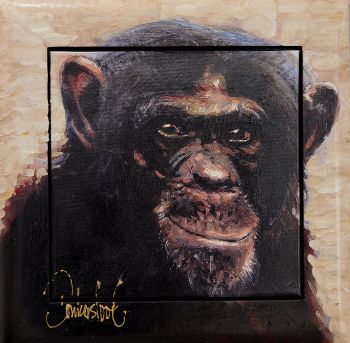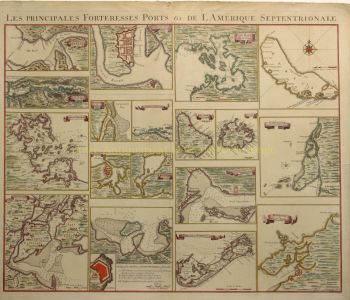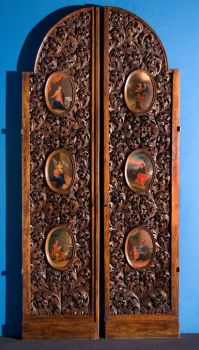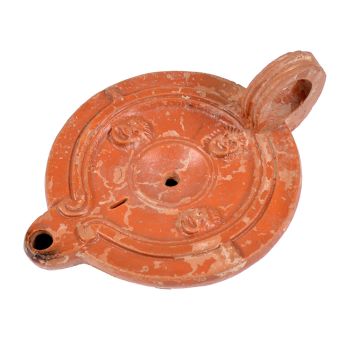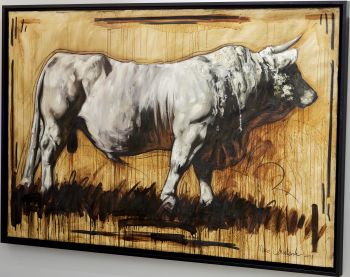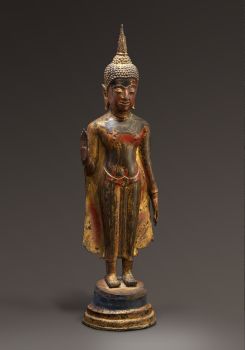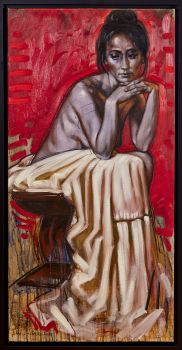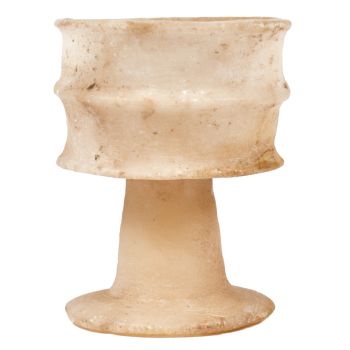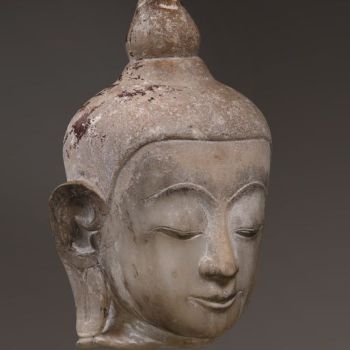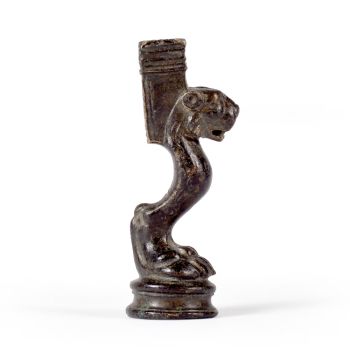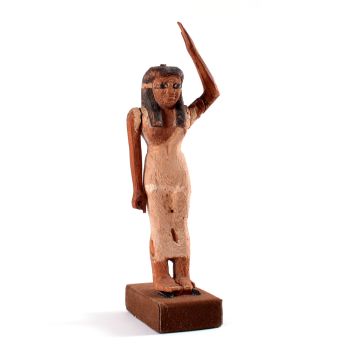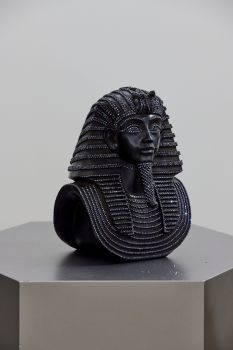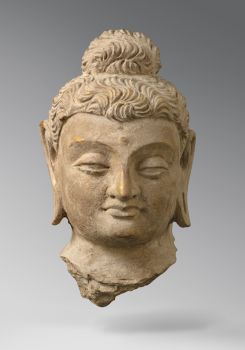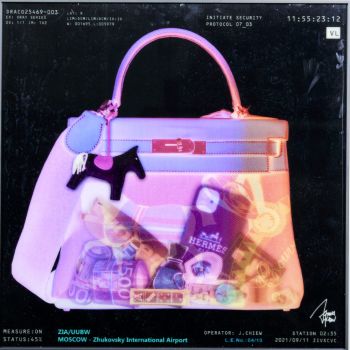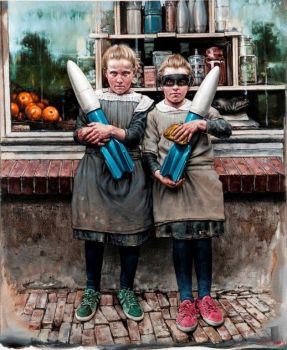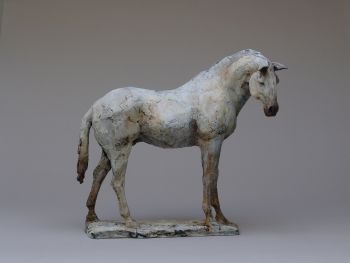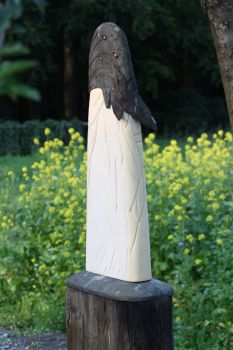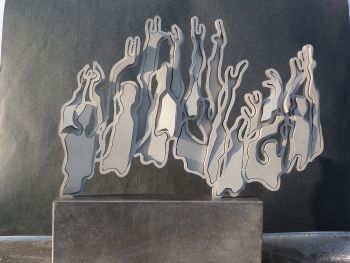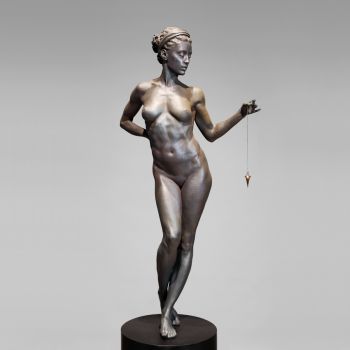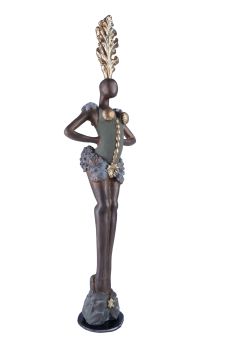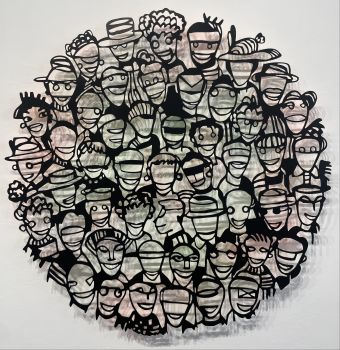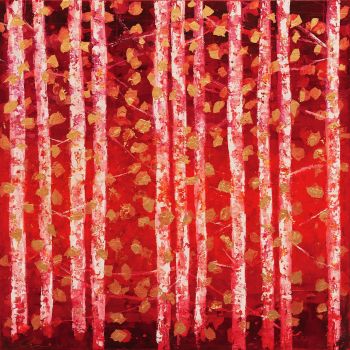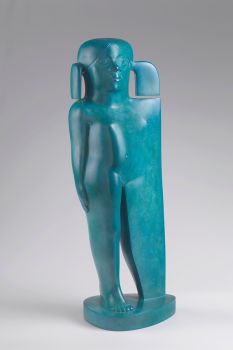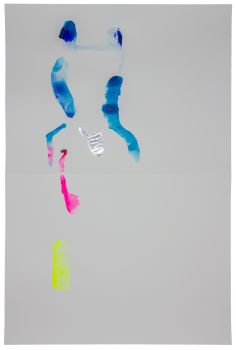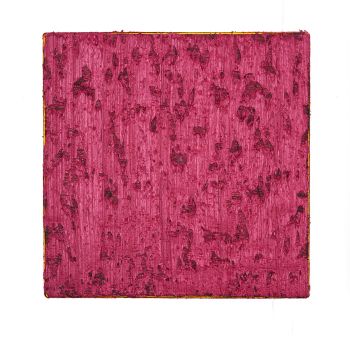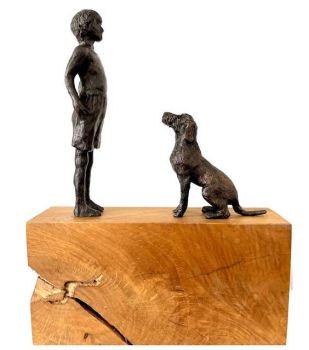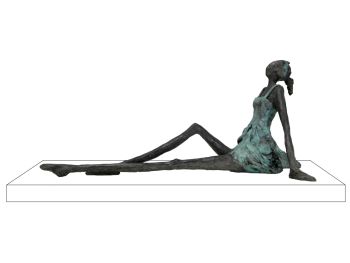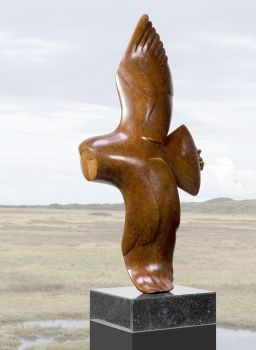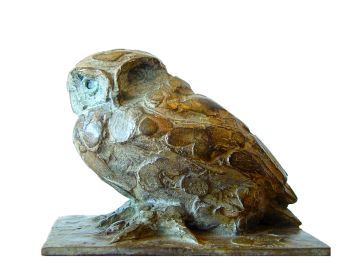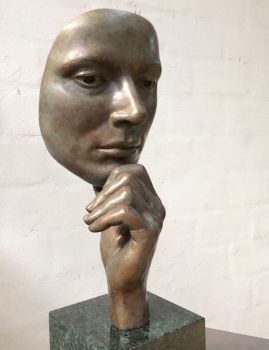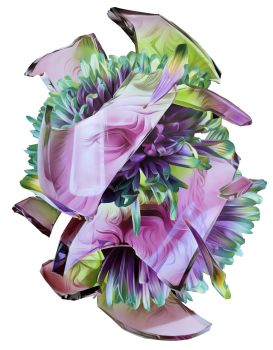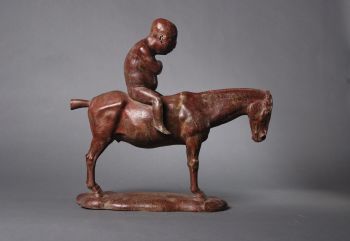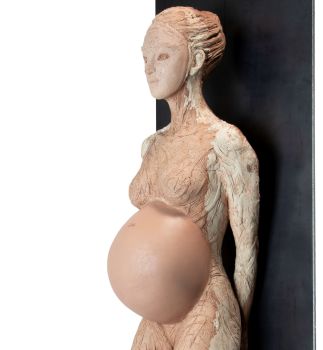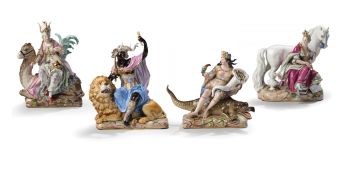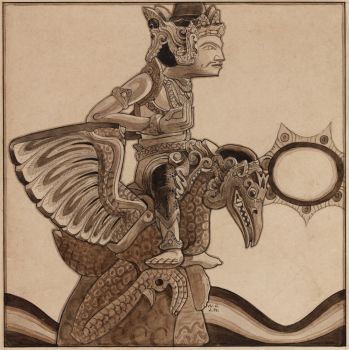A rare pair of Royal camel-guns or 'zamburak', formerly belonging to Maharaja Bahadur Singh of Ajmer 1857 - 1903
Artista Sconosciuto
LegnaOroMetallo
116 cm
Prezzo su richiesta
Zebregs & Röell - Fine Art - Antiques
- A proposito di opere d'arteA rare pair of Royal camel-guns or 'zamburak', formerly belonging to Maharaja Bahadur Singh of Ajmer (1857-1903)
Rajasthan, Ajmer, dated Samvat 1952 (1895 CE)
Each cannon in polychrome wood and koftgari gold steel, inscribed 'Maharaj Shri Bahadur Singh Ji, Rajasthan Masuda Samvat 1952'.
L. 116 cm (each)
A zanburak, pronounced zamburak, is known in Arabic, Persian and Turkish as wasp, bee or hornet. ‘Zambur’ means hornet, and ‘ak’ is the diminutive - so ‘little wasp’. These swivel guns were carried by camels and were used by the Persians in the eighteenth century until their demise in 1849. In battle, the animals would be restrained on their knees and loaded as bombardiers, after which the weapons would be fired from atop their backs. Zamburaks were the Indian response to European horse artillery. However, the zamburaks were less mobile and thus less manoeuvrable than horse artillery. An Ottoman example of one of these guns mounted on a camel is illustrated by Marsigli in L'Etat militaire de l'Empire Ottoman in 1732. During the Sikh Wars (1846-1847 & 1848-1849), the speed of movement of the European horse artillery made the zamburaks useless. They were too slow, and their power was inadequate. They couldn’t catch up with the European horse artillery. That doesn’t, however, make them less impressive and frightening.
Provenance:
Maharaja Rao Saheb Bahadur Singh, Thakur of Masuda (reigned 1863-1903)
Collection Davinder Toor, London
Sources:
Roy Kaushik, ‘Military Synthesis in South Asia: Armies, Warfare and Indian Society, c. 1740-1849’, in: The Journal of Military History, Volume 69, no. 3, 2005, p. 662
Robert Elgood, Firearms of the Islamic World in the Tareq Rajab Museum, Kuwait, I.B. Tauris & Co. Ltd, 1995, p. 137-139 - A proposito di opere artista
Può succedere che un artista o un creatore sia sconosciuto.
Alcune opere non sono determinate da chi sono state realizzate o sono state realizzate da (un gruppo di) artigiani. Esempi sono statue dell'antichità, mobili, specchi o firme non chiare o leggibili ma anche alcune opere non sono affatto firmate.
Inoltre puoi trovare la seguente descrizione:
•"Attribuito a …." A loro avviso probabilmente opera dell'artista, almeno in parte
•“Studio di ….” o “Officina di” A loro avviso un'opera eseguita nello studio o nella bottega dell'artista, eventualmente sotto la sua supervisione
•“Cerchio di…” A loro avviso un'opera del periodo dell'artista che mostra la sua influenza, strettamente legata all'artista ma non necessariamente al suo allievo
•"Stile di..." o "Seguace di..." A loro avviso un'opera eseguita nello stile dell'artista ma non necessariamente da un allievo; può essere contemporaneo o quasi contemporaneo
•“Modalità di…” A loro avviso un'opera nello stile dell'artista ma di epoca successiva
•"Dopo …." A loro avviso una copia (di qualsiasi data) di un'opera dell'artista
•“Firmato…”, “Datato…” o “Iscritto” A loro avviso l'opera è stata firmata/datata/inscritta dall'artista. L'aggiunta di un punto interrogativo indica un elemento di dubbio
•"Con firma....", "Con data...", "Con iscrizione..." o “Riporta firma/data/iscrizione” a loro avviso la firma/data/iscrizione è stata aggiunta da qualcuno diverso dall'artista
Sei interessato ad acquistare questa opera d'arte?
Related artworks
Artista Sconosciuto
UN NETSUKE MARINO IN AVORIO DI UN OLANDESE CHE TIENE UN FAN . CINESE18th century
Prezzo su richiestaZebregs & Röell - Fine Art - Antiques
1 - 4 / 12Artista Sconosciuto
The bell of the VOC fortress in Jaffna, Sri Lanka1747
Prezzo su richiestaZebregs & Röell - Fine Art - Antiques
 A cura di
A cura diDanny Bree
1 - 4 / 15- 1 - 4 / 8
- 1 - 4 / 24
Roland Strasser
Geisha giapponese20th century
Prezzo su richiestaZebregs & Röell - Fine Art - Antiques
Artista Sconosciuto
The bell of the VOC fortress in Jaffna, Sri Lanka1747
Prezzo su richiestaZebregs & Röell - Fine Art - Antiques
 A cura di
A cura diDanny Bree
Hubert Vos
Ritratto di un punjabi nell'India britannica1898
Prezzo su richiestaZebregs & Röell - Fine Art - Antiques
Artista Sconosciuto
A large Japanese Imari porcelain 'VOC Groningen' dish1800 - 1925
Prezzo su richiestaZebregs & Röell - Fine Art - Antiques
1 - 4 / 12








